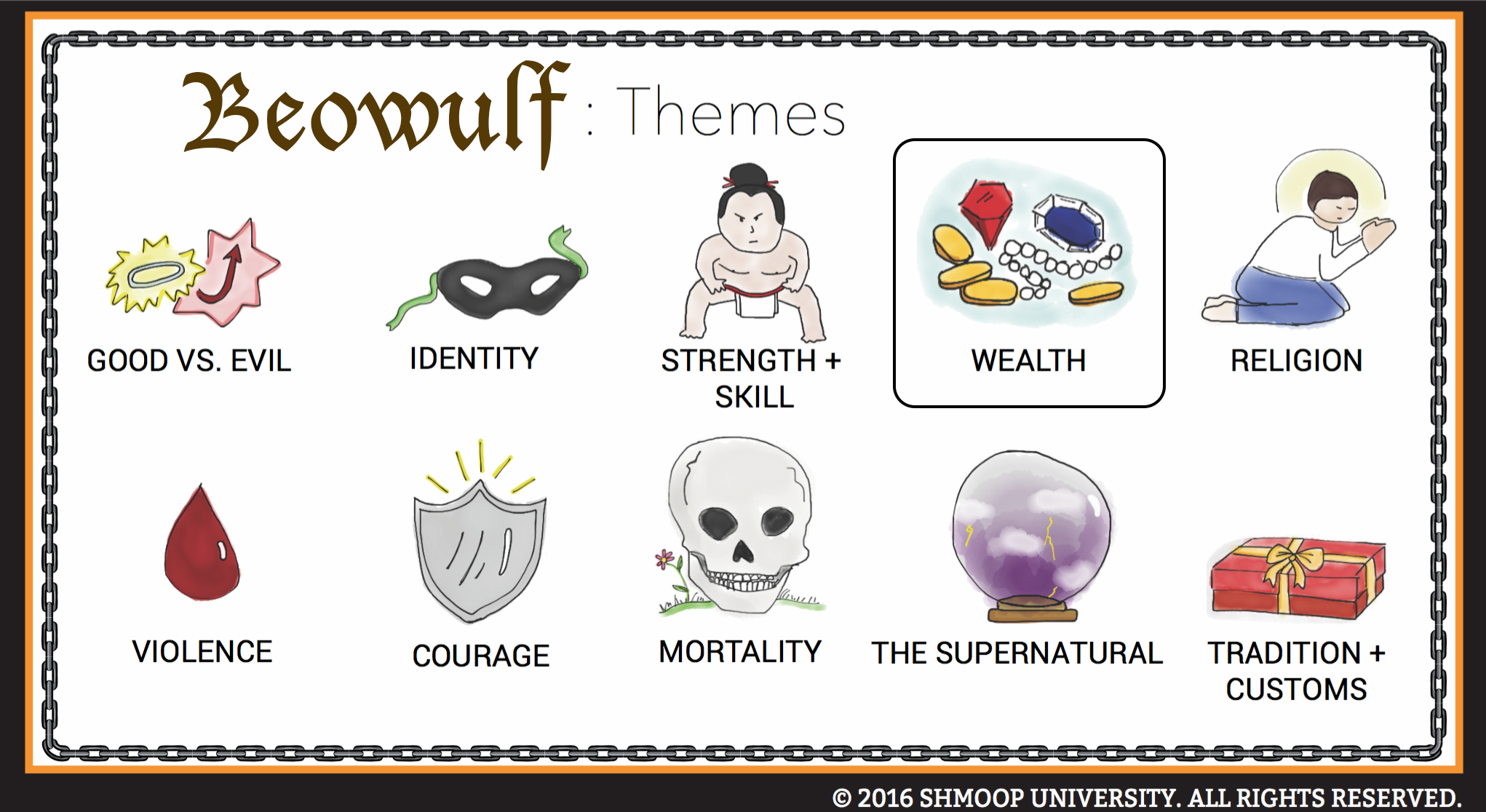 (Click the themes infographic to download.)
(Click the themes infographic to download.)
Beowulf depicts the warrior culture of medieval Scandinavia and England, which relied heavily on the giving and receiving of gold, armor, weapons, coins, jewels, jewelry, and other treasures. Every tribe is centered around a king, who is also called a "ring-giver." The king's gifts of treasure to his followers ensure their loyalty – they're literally being well-rewarded for following him. Battles and family feuds are also resolved by the exchange of wealth. If someone is killed, his family must be paid a "death-price" to prevent revenge killing. If a treaty needs to be enacted, some jewels better change hands, too. These people take the "gold standard" to a whole new level.

Questions About Wealth
- Why are there so many elaborate descriptions of hoards of treasure and weapons in Beowulf? What do these hoards tell us about their owners – Hrothgar, Beowulf, Grendel's mother, and the dragon?
- How is wealth related to loyalty in Beowulf? Hint: why is a king called a "ring-giver" (36)?
- What is the symbolism of Beowulf's golden necklace, which he gives to Wiglaf just before he dies?
- Why do the Geats choose to burn or bury most of the treasure that Beowulf won from the dragon? How does destroying or disposing of all this wealth actually honor their king?
Chew on This
In Beowulf, wealth and treasure are physical reminders of relationships and allegiances.
One of the most important characteristics of a king, in medieval Scandinavian warrior culture, is his generosity toward his followers.